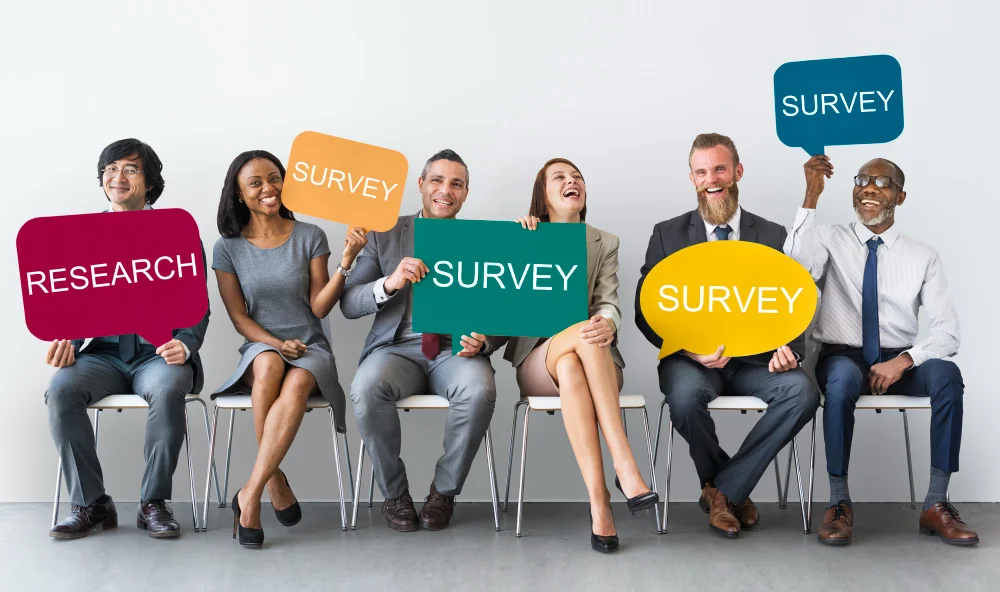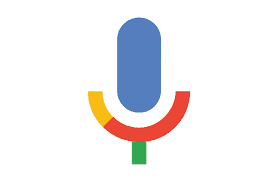Imagine trying to lead a team scattered across continents, spanning generations with vastly different work expectations, all while managing the rapid pace of technological change. Sounds challenging, right? In today’s digital age, traditional management styles like top-down control are quickly becoming obsolete.
No longer is leadership about barking orders or obsessively tracking clock-ins—after all, even the military has embraced digital! As the boundaries between work and home blur, embracing modern, tech-savvy management styles is essential. Here’s your cheat sheet for navigating the evolving world of leadership.
Is it over for the Traditional Management Styles?
Spoiler Alert… Not Yet… But A Major Renovation Is in Progress!
So in sum, are the classic management models — autocratic, democratic and laissez-faire — all but dead? To cut to the chase: no way, José! Although techniques from the old school era still hold dear, they have a digital twist nowadays. Certainly the digital age is a Botox for management styles; it tightens up structures and make it looking fresh again. Leaders are not leaving behind these styles; they’re refreshing them with tech and the time factor. Let’s break it down.
Autocratic Leadership in the Digital Era: The Dictator with a Dashboard
Picture the classic autocratic leader, still calling all the shots, but now equipped with a powerful new tool: endless streams of data. While autocratic leadership may seem outdated or harsh, it’s still vital in industries where quick, decisive action is essential, and failure isn’t an option—think finance, healthcare, or military operations.
What’s new, however, is the integration of real-time data analytics. Gone are the days of relying solely on gut instinct. Today’s autocratic leaders have advanced analytics tools that offer predictive insights, almost like a GPS for leadership.
These tools help them make real-time decisions, knowing exactly when to accelerate, hit the brakes, or switch lanes. In fast-paced environments like financial markets, where milliseconds can change the game, predictive analytics provides the critical edge needed for making split-second decisions.
Democratic Leadership Goes Virtual: The Digital Town Hall
Remember the days when decision-making happened in stuffy boardrooms? Well, those days are long gone! In today’s remote work culture, democratic leadership has found a new home in the digital space.
Platforms like Microsoft Teams, Slack, and Zoom have become the modern town halls, where every voice—from anywhere in the world—can be heard.
What once took hours of coordinating to gather everyone in a single room is now as simple as an online poll or a quick video chat. From Tokyo to Texas, democratic leadership thrives on inclusivity, welcoming input from all corners and empowering teams to collaborate on decisions.
The playing field is level—geography does not matter, and introverts who might have been too shy to communicate in a traditional meeting can be equally vocal mediators over remote work and collaboration tools.
Laissez-faire Leadership with a Digital Twist: Freedom, But with Guardrails
Traditional laissez-faire leadership is all about giving people the freedom to work independently without constant oversight. In today’s tech-driven world, however, this leadership style has evolved with a digital twist. While laissez-faire works best in environments where creativity and independence are essential, leaders can now leverage cloud-based project management tools like Trello, Asana, or Monday to maintain oversight without micromanaging.
These tools provide transparency, allowing leaders to track progress without hovering over their teams. It’s a hands-off approach, but not blind. Employees are empowered to manage their own tasks, set their schedules, and make decisions autonomously—yet the leader still retains control over the overall project objectives. It’s the ultimate “trust but verify” model.
In industries like creative agencies, tech companies, or startups, this style is a goldmine—allowing for innovation and flexibility with the security of a digital safety net. While laissez-faire leadership may not fit every industry (you wouldn’t want your airline pilot going rogue), it’s ideal for teams where independence and creativity thrive.
Enter Transformational Leadership: The Real MVP of the Digital Age
If traditional management styles are merely chasing the volley, transformational leadership is playing an entirely different game. It’s the rockstar headliner who takes the stage after a warm-up act of outdated management methods.
In a world driven by constant technological evolution, transformational leaders don’t just manage—they inspire, innovate, and adapt. These leaders thrive in the digital age, guiding teams through change by fostering a culture of growth, creativity, and forward-thinking. They’re not just keeping up with the times—they’re shaping the future.
1. Vision and Innovation: Leaders Who See Around Corners
In today’s rapidly changing marketplace, sitting back and waiting for things to happen is not an option. Transformational leaders set a bold vision for the future, becoming the “psychics” of the corporate world. They don’t just react to trends—they predict and shape them, often using cutting-edge tools like artificial intelligence and machine learning to anticipate what’s next.
Take Elon Musk, for example. He didn’t just aim to produce a better electric car—he envisioned revolutionizing the entire transportation industry. His vision for Tesla and SpaceX goes far beyond short-term profits; it’s about fundamentally reshaping how we think about transportation and space exploration. Transformational leaders, like Musk, are driven by innovation, not just quarterly earnings, and they actualize the future they envision.
2. Employee Empowerment: The Digital Age’s Biggest Currency
In the fast-paced digital age, creativity is not just a bonus—it’s essential. Transformational leaders thrive by empowering employees to think differently, experiment, and take risks in the name of innovation.
The key to their success? They are not micromanagers. Rather than providing step-by-step instructions for every task, they set a clear vision and trust their teams to figure out the “how.”
This type of empowerment fosters a culture where innovation can flourish. By giving employees the freedom to explore new ideas and approaches, transformational leaders create an environment where creativity becomes the driving force behind success. Empowerment, not control, is the true currency in today’s leadership.
3. Adaptability: If You’re Not Growing, You’re Dying
In today’s fast-paced digital world, adaptability isn’t optional—it’s essential. The most effective leaders are the ones who not only embrace change but drive it, fostering agility throughout their organizations. They are lifelong learners, always on the lookout for the next technology, strategy, or method to keep their teams ahead of the curve.
Does this mean traditional management styles are obsolete? Not quite—they’ve simply evolved. Leadership in the digital age has transformed, with data-powered autocrats, remote-friendly democrats, and laissez-faire leaders leveraging cloud-based tools.
But if you’re aiming to lead with true impact, transformational leadership is the real game-changer. It’s not just about management; it’s about influence, innovation, and building something greater than the sum of its parts.
Real-Life Case Study: Walmart’s Omnichannel Strategy
If you’re thinking this all sounds nice but impractical, let’s take a real-world example: Walmart. In its quest to keep pace with Amazon, Walmart underwent a massive digital transformation, rolling out an omnichannel strategy that bridged its physical stores with online shopping. How did they do it?
- Leveraging AI for Inventory Management: Walmart tapped into AI and IoT to optimize its supply chain, making sure stock levels were always on point. Gone are the days of wandering the aisles for an out-of-stock item—thanks to technology, the system knows what’s missing before you do
- Creating a Seamless Customer Experience: They didn’t stop there. With a robust mobile app that integrates in-store shopping, curbside pickup, and even same-day delivery, Walmart blended the physical and digital worlds to make shopping as frictionless as possible. The result? Higher customer satisfaction and loyalty. This is transformational leadership at play, with tech-enhanced management techniques driving massive change.
The Role of Technology in Modern Management Styles
Here’s a fundamental truth: Technology is no longer a luxury or an optional tool for leaders—it’s essential to modern management. It’s not just another convenience; it’s a game-changer, integral to every successful management approach today. But how does this shift affect the way we lead?
Technology has redefined leadership by enabling real-time decision-making, remote collaboration, and data-driven strategies. It allows leaders to track performance, foster creativity, and manage teams across time zones seamlessly.
Whether through project management platforms, AI-driven analytics, or communication tools, technology has reshaped traditional management styles, turning them into more agile, transparent, and effective models fit for the digital era.
1. Data-Driven Decision Making: Say Goodbye to Gut Instincts
We are a far cry from the era where leaders made decisions based on gut feeling only. Managers, by today, have access to analytics platforms that operate live in showcase data regarding employees’ production performance or community preferences. Here was finally a place where leaders no longer had to rely upon guesswork and were able to base decision-making on data.
Analytic tools such as Google Analytics or Salesforce offer the same kind of information about the market trends that enable upper management to initiate changes instead of merely responding to them.
2. Remote Work Management: The New Normal
The pandemic didn’t just hit ‘pause’ on office life—it completely rewrote the rulebook. While tools like Slack, Zoom, and Microsoft Teams have become essentials, remote work is about far more than virtual meetings. Leading in this new normal requires driving productivity and engagement from a distance, and that means setting clear expectations, fostering open communication, and building a culture of trust.
Micromanagement has no place here. Instead, it’s about empowering teams to self-manage, offering them the freedom to excel while maintaining regular check-ins to keep everything on track. In this remote setup, success comes from trust, autonomy, and strong communication—not constant oversight.
3. Project Management Tools: Keeping the Chaos in Check
Trying to lead an effective team without project management tools like Asana, Jira, or SmartPlaybooks? You might as well be juggling flaming swords. These platforms streamline task assignments, progress tracking, and team collaboration, making them indispensable for both remote and in-office teams.
With real-time updates and intuitive dashboards, project management tools make agile workflows smoother and help you stay on top of iterative projects with ease. They empower leaders to be smarter and faster, ensuring projects run efficiently while keeping the chaos firmly in check. In short, these tools are the backbone of modern, effective leadership.
The Human Element: Emotional Intelligence in the Tech World
In an era dominated by algorithms, machine learning, and automation, it’s tempting to prioritize scalability above all else. But at the end of the day, even AI can’t read a room—it won’t tell you when your team is burnt out or disengaged. That’s where emotional intelligence (EI) becomes indispensable, serving as the human touch in a tech-driven landscape.
Now more than ever, EI is not just a “nice-to-have” leadership trait; it’s essential. Leaders who can understand, empathize, and respond to the emotional needs of their teams are the ones who will thrive in this new world of work. Emotional intelligence ensures that, amidst all the technology, leaders stay connected to the human element at the heart of every organization.
Building Trust and Strong Relationships
No piece of software can replicate how the development of emotional intelligence empowers leaders to build trust and strong relationships. Managers who demonstrate active listening, produce empathy, and provide support are almost bound to create a sense of loyalty and collaboration within their team. [Conversely] employees that are heard and employees feel valued in the company simply from treating them as fully formed people, they are happier at work and engaged with their work.
All too often in a social media-driven world — empathy can make up for the transactional nature of the interactions. Leaders with high emotional intelligence can spot these struggles when employees are WFH and juggling between their personal and professional lives.
The same is true in the case of mental health issues amplified by social isolation. They go the long way to give support — things like letting them work from home, mental health resources or just being there for a real talk
Managing Culture and Change in a Digital Landscape
Managing culture and navigating change are two of the biggest challenges in the digital age. But here’s the kicker: the best leaders aren’t just reacting to change; they’re driving it. They do this not through top-down mandates but by being emotionally attuned to how these changes will impact their people.
Imagine introducing a new cloud platform to an organization. For some employees, this could be exciting and represent progress. For others, it might trigger anxiety or fear of becoming obsolete. An emotionally intelligent leader knows this. They can communicate the ‘why’ behind the change effectively, acknowledging the concerns of their team while rallying them around the vision for the future
Change-Agents in the Digital Revolution
The leaders who thrive in the digital landscape are those who don’t just adapt to change—they embody it. They understand that organizational transformation starts from the top and cascades down. When implementing new technologies, these leaders break down the silos that might exist between departments, fostering a culture of cross-functional collaboration.
They don’t just announce changes; they live them, leading by example and championing a mindset of continuous learning and improvement. This kind of leadership isn’t about being a tech wizard—it’s about being a people wizard.
The Final Word: It’s Not Just About the Tools—It’s About Mindset
Here’s the bottom line: You can throw all the tech tools you want at a problem, but if your leadership doesn’t reflect a growth mindset, you’re going to struggle. The tools—be it AI, project management software, or remote work platforms—are just that: tools.
The real magic happens when leaders combine those tools with emotional intelligence to foster an environment of innovation, trust, and agility.
The leaders of tomorrow aren’t just tech-savvy; they’re emotionally intelligent, adaptable, and deeply connected to their teams. They know that while AI might predict customer behavior, only they can nurture the talent and creativity that will drive their organizations forward. The future of leadership isn’t just digital—it’s human.
FAQs
What is transformational leadership in the digital age?
Transformational leadership in the digital age is about inspiring and guiding teams through rapid technological changes. It focuses on innovation, employee empowerment, and adaptability to keep organizations competitive.
How has remote work impacted management styles?
Remote work has forced leaders to rely more on digital tools for communication and project management. It also requires stronger emotional intelligence to keep teams connected and motivated.
What role does emotional intelligence play in digital leadership?
Emotional intelligence remains crucial, as it helps leaders understand and support their employees, building trust and improving communication, especially in remote and hybrid work environments.
How can technology enhance traditional management styles?
Technology can streamline decision-making processes, enhance collaboration, and provide real-time insights, making traditional management styles more agile and effective in today’s fast-paced world.
What’s the key to successful leadership in the digital age?
The key is adaptability. Leaders need to embrace change, invest in continuous learning, and foster a culture that encourages innovation and collaboration across all levels of the organization.














 Cultivating a learning culture is indispensable for sustained business excellence, as it profoundly influences various facets of an organization, from strategy and creativity to employee engagement and retention. The significance of a learning culture in the workplace is multifaceted, and here’s why:
Cultivating a learning culture is indispensable for sustained business excellence, as it profoundly influences various facets of an organization, from strategy and creativity to employee engagement and retention. The significance of a learning culture in the workplace is multifaceted, and here’s why:
 Lack of Faith in the Company
Lack of Faith in the Company







 Google Drive is an excellent tool for hybrid businesses to store and share files. You can upload documents to the cloud and grant access to specific employees or anyone with the link. Plus, you can create files in Google Drive with Docs, Sheets, and Slides.
Google Drive is an excellent tool for hybrid businesses to store and share files. You can upload documents to the cloud and grant access to specific employees or anyone with the link. Plus, you can create files in Google Drive with Docs, Sheets, and Slides. Along with Google Drive, Gmail is a part of Google Workspace, but you can also use it separately. This email client comes with a lot of great features, such as auto-suggestions to help you write emails more quickly to
Along with Google Drive, Gmail is a part of Google Workspace, but you can also use it separately. This email client comes with a lot of great features, such as auto-suggestions to help you write emails more quickly to  If you want to give your employees
If you want to give your employees  Another one of the best tools for a hybrid business is Slack. It’s a great place to post company announcements or other quick messages. What’s more, there’s a free tier, which is nice if you have a small budget.
Another one of the best tools for a hybrid business is Slack. It’s a great place to post company announcements or other quick messages. What’s more, there’s a free tier, which is nice if you have a small budget. Many
Many  Some tasks can be difficult to explain in a text-based document. If you need to provide a tutorial on your company’s software, for example, you can record a video in Loom. Then, you can store that recording and send it to anyone who needs it.
Some tasks can be difficult to explain in a text-based document. If you need to provide a tutorial on your company’s software, for example, you can record a video in Loom. Then, you can store that recording and send it to anyone who needs it. Toggl is a business tool that you can use to track employee work hours. Employees and contractors can use it to monitor how much they’re working. Then, you can use their hours to determine how much to pay everyone.
Toggl is a business tool that you can use to track employee work hours. Employees and contractors can use it to monitor how much they’re working. Then, you can use their hours to determine how much to pay everyone. When you have a hybrid team, it can be hard to contact people to schedule individual meetings. Luckily, Calendly lets you add your availability to a schedule. You can send your special link to people, and they can choose a time slot that works for them.
When you have a hybrid team, it can be hard to contact people to schedule individual meetings. Luckily, Calendly lets you add your availability to a schedule. You can send your special link to people, and they can choose a time slot that works for them. When it comes to scheduling group meetings, consider using Doodle. The tool allows you to create polls and send the link to everyone in your department. Then, everyone can select the days and times that work for them.
When it comes to scheduling group meetings, consider using Doodle. The tool allows you to create polls and send the link to everyone in your department. Then, everyone can select the days and times that work for them. If you need to meet with
If you need to meet with  Google Meet is a good alternative to Zoom, especially if you use other Google products. You and your team can log into the meeting using your respective Google accounts. Unlike Zoom, you don’t need to download any software to your computer.
Google Meet is a good alternative to Zoom, especially if you use other Google products. You and your team can log into the meeting using your respective Google accounts. Unlike Zoom, you don’t need to download any software to your computer. Another one of the best tools for hybrid businesses is Canva. Like Google Drive, it works in your browser and as a mobile app. However, Canva lets you create more visually appealing documents.
Another one of the best tools for hybrid businesses is Canva. Like Google Drive, it works in your browser and as a mobile app. However, Canva lets you create more visually appealing documents.





 Let us look at some reasons to understand the
Let us look at some reasons to understand the


